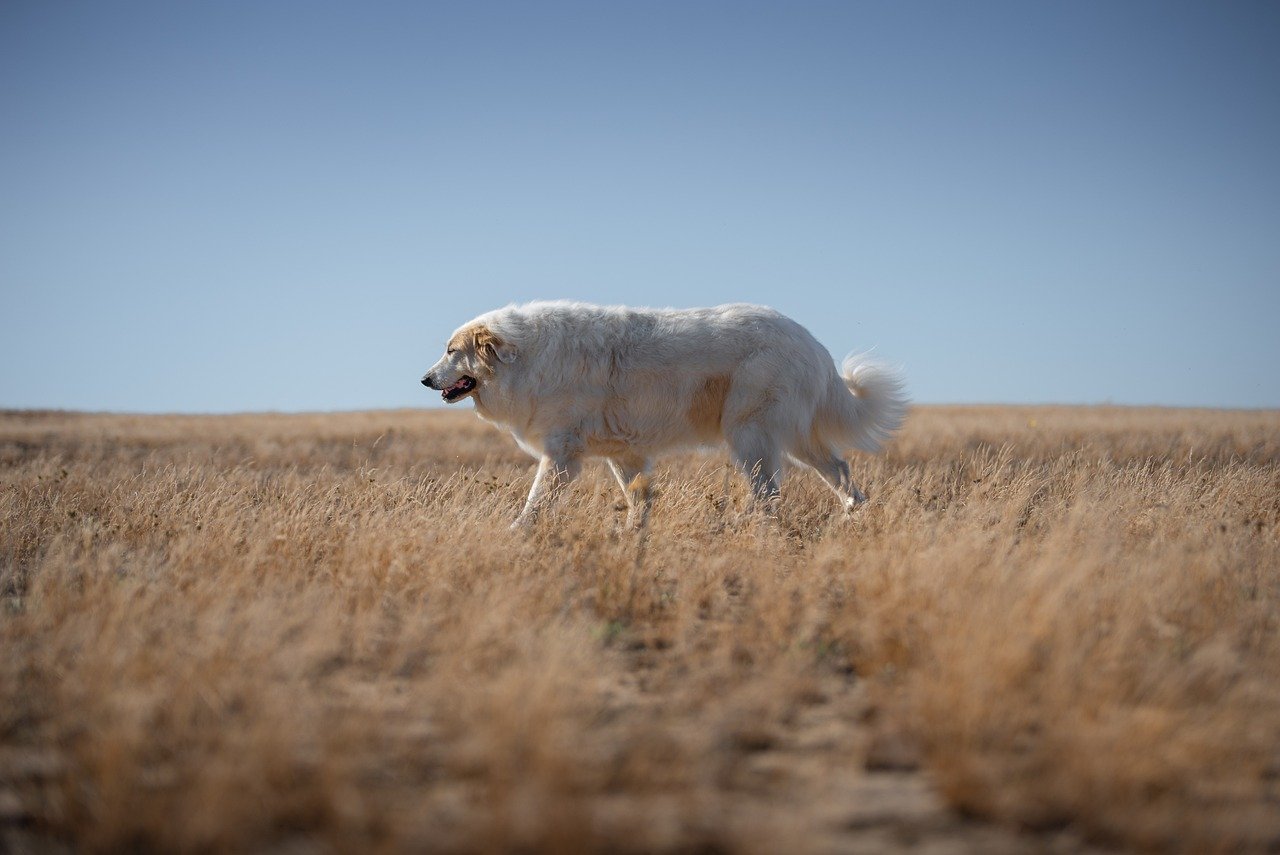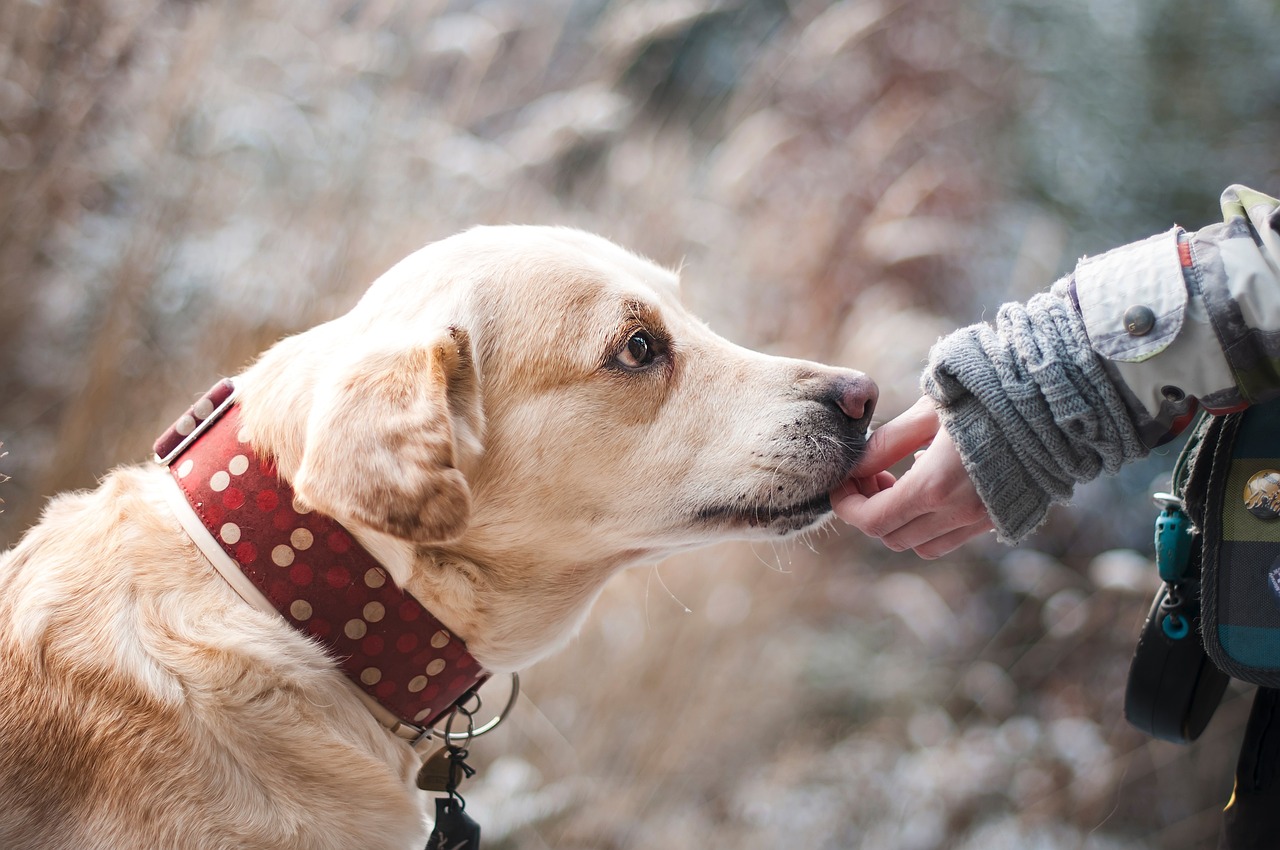How to Identify Breeds by Their Size and Weight
Identifying dog breeds can sometimes feel like deciphering a complex puzzle, especially with the sheer variety of shapes, sizes, and weights out there. Each breed has its own unique characteristics, making it essential to understand how size and weight play a pivotal role in breed identification. Whether you're a seasoned dog owner or a curious enthusiast, knowing the distinctions among breeds can enhance your experience and help you choose the perfect companion. In this article, we will explore the fascinating world of dog breeds categorized by their size and weight, providing you with insights that will make identifying these furry friends much easier.
Dog breeds are typically classified into several size categories: toy, small, medium, large, and giant. Each category not only reflects the dog’s physical dimensions but also hints at their temperament and care requirements. For instance, toy breeds like the Chihuahua or Pomeranian are often known for their lively personalities, while giant breeds such as the Great Dane may have a more laid-back demeanor despite their imposing size. Understanding these classifications is crucial, as it helps potential dog owners align their lifestyle with the breed's needs. Below is a brief overview of these categories:
| Size Category | Typical Weight Range | Examples |
|---|---|---|
| Toy | Under 10 lbs | Chihuahua, Pomeranian |
| Small | 10 - 20 lbs | Beagle, Dachshund |
| Medium | 20 - 60 lbs | Bulldog, Cocker Spaniel |
| Large | 60 - 100 lbs | Golden Retriever, Labrador |
| Giant | Over 100 lbs | Great Dane, Mastiff |
Weight is a critical factor in identifying dog breeds, as it often correlates with their overall health, behavior, and even training needs. For example, small breeds typically weigh under 20 pounds, making them ideal for apartment living, while large breeds often exceed 60 pounds and require more space to roam and exercise. The weight range associated with each size category not only aids in breed recognition but also helps potential dog owners assess whether they can meet the physical and emotional needs of the breed they are considering. Understanding these weight ranges can guide you in making informed decisions when selecting a dog that fits your lifestyle.
Small dog breeds are often characterized by their playful and energetic nature, despite their diminutive size. Breeds like the Chihuahua, Pomeranian, and Dachshund typically weigh under 20 pounds and are known for their distinct personalities. These breeds are not only adorable but also make excellent companions for those living in smaller spaces. However, it's essential to remember that small does not mean less responsibility; they still require regular exercise, socialization, and training to thrive. Their small stature can sometimes lead to health issues, so potential owners should be aware of the specific needs associated with these breeds.
Medium-sized dogs, weighing between 20 to 60 pounds, strike a perfect balance between being manageable and providing a robust companionship experience. Breeds such as the Bulldog, Cocker Spaniel, and Australian Shepherd are not only versatile but also adapt well to various living conditions. Their size allows them to be both affectionate lap dogs and energetic playmates. Medium breeds often exhibit a wide range of temperaments, making them suitable for families, singles, or seniors alike. Their moderate size also means they usually require a good amount of exercise and mental stimulation, making them ideal for active owners.
Large breeds, often weighing over 60 pounds, come with their own set of unique traits and challenges. Breeds like the Golden Retriever and Labrador are not only known for their friendly demeanor but also their need for ample space and exercise. Owners of large dogs must be prepared for the physical demands of training and socialization, as these breeds can exhibit strong, powerful behaviors if not properly managed. Additionally, large breeds may face specific health issues related to their size, such as hip dysplasia or heart conditions, making regular veterinary check-ups essential. Understanding these characteristics is key to ensuring a happy and healthy life for your large breed companion.
Giant breeds, weighing over 100 pounds, are truly awe-inspiring. Breeds like the Great Dane and Mastiff not only dominate in size but also have distinct needs and traits that set them apart from their smaller counterparts. Despite their intimidating stature, many giant breeds are known for their gentle and affectionate nature. However, potential owners should be aware of the unique care requirements associated with these breeds, including their need for space, specialized diets, and tailored exercise routines. Understanding the nuances of giant breeds is crucial for anyone considering welcoming one into their home.
Recognizing the significance of size and weight in breed identification cannot be overstated. These factors contribute greatly to understanding a dog's typical behaviors, energy levels, and care requirements. When considering a breed, it's important to reflect on your living situation, activity level, and personal preferences. For instance, if you live in a small apartment, a toy or small breed may be more suitable, whereas larger homes with yards could accommodate a medium or large breed. By aligning your lifestyle with a breed's size and weight, you'll pave the way for a harmonious relationship with your new furry friend.
Several factors influence a dog's size and weight, and they can vary significantly from one breed to another. Genetics plays a primary role, as breeding practices can lead to variations in size and weight even within the same breed. Additionally, diet and nutrition are crucial; a well-balanced diet can promote healthy growth and development, while poor nutrition can lead to obesity or stunted growth. Environmental factors, such as exercise opportunities and living conditions, also impact a dog's size and weight. Understanding these influences can help prospective dog owners make informed decisions about their pet's care and well-being.
- What is the best size dog for apartment living? Generally, toy and small breeds are ideal for apartment living due to their compact size and lower exercise requirements.
- How do I determine my dog's breed by size and weight? Start by measuring your dog's weight and height, then compare these measurements to known breed standards to identify possible matches.
- Are larger dogs more difficult to train? Not necessarily; training difficulty can vary based on the dog's temperament, but larger breeds may require more consistent handling due to their strength.
- What health issues are common in giant breeds? Giant breeds are prone to specific health problems such as hip dysplasia, heart conditions, and bloat, so regular veterinary care is essential.

Understanding Size Categories
When it comes to identifying dog breeds, one of the first things you might notice is their size. Dogs come in a variety of shapes and sizes, and understanding these categories is essential for anyone looking to choose a furry companion. Generally, dog breeds are classified into five main size categories: toy, small, medium, large, and giant. Each category not only represents a range of weights but also encompasses specific characteristics that can help you identify a breed.
Let's break down these categories a bit further. The toy classification is for those pint-sized pups that weigh under 10 pounds. These dogs are perfect for apartment living and are often adored for their playful personalities. Think of breeds like the Chihuahua or the Pomeranian, which can fit snugly in your handbag yet have larger-than-life attitudes.
Next up is the small category, which generally includes dogs weighing between 10 to 20 pounds. Breeds like the Dachshund and the Shih Tzu fall into this group. They may be small, but they often have a big presence and can be quite vocal, making them excellent watchdogs despite their size.
Moving on to the medium category, which encompasses dogs weighing between 20 to 60 pounds. This size range includes popular breeds like the Beagle and the Bulldog. Medium-sized dogs are often seen as the ideal family companions because they strike a balance between being manageable and robust enough for outdoor activities.
Then, we have the large category, which features dogs that weigh over 60 pounds but under 100 pounds. Breeds like the Labrador Retriever and the German Shepherd fit this classification. Large dogs are known for their strength and loyalty, but they also require more space and exercise, making them more suited for active families or individuals.
Finally, the giant category includes breeds that weigh over 100 pounds. This group is home to some of the most impressive dogs, such as the Great Dane and the Saint Bernard. These gentle giants are often known for their docile nature and loving temperament, but they come with unique care requirements due to their sheer size.
Understanding these size categories is not just about knowing how much a dog weighs; it also provides insight into their behavior, exercise needs, and overall suitability for your lifestyle. For instance, a toy breed might be perfect for a city dweller, while a large or giant breed may thrive in a spacious home with a yard. By recognizing these classifications, you can make a more informed decision when selecting a breed that fits your life.
| Size Category | Weight Range | Examples of Breeds |
|---|---|---|
| Toy | Under 10 lbs | Chihuahua, Pomeranian |
| Small | 10 - 20 lbs | Dachshund, Shih Tzu |
| Medium | 20 - 60 lbs | Beagle, Bulldog |
| Large | 60 - 100 lbs | Labrador Retriever, German Shepherd |
| Giant | Over 100 lbs | Great Dane, Saint Bernard |
In conclusion, recognizing the size categories of dog breeds can significantly aid in your understanding of their needs and behaviors. Whether you are an experienced dog owner or a first-time buyer, knowing what to expect based on size can help you create a harmonious environment for your new furry friend.

Weight Ranges for Breeds
When it comes to identifying dog breeds, weight plays a crucial role alongside size. Each breed has a specific weight range that helps enthusiasts and potential pet owners recognize them. Understanding these weight categories can be your secret weapon in the quest for the perfect furry companion. Think of it as having a cheat sheet that guides you through the vast world of dog breeds.
Generally, dog breeds can be categorized into several weight ranges:
| Size Category | Weight Range |
|---|---|
| Toy | Under 10 pounds |
| Small | 10 - 20 pounds |
| Medium | 20 - 60 pounds |
| Large | 60 - 100 pounds |
| Giant | Over 100 pounds |
In this table, you can see how different breeds fall into various weight categories. For example, toy breeds like the Chihuahua or Pomeranian typically weigh under 10 pounds. These little guys are perfect for apartment living and are often seen as lap dogs. On the other hand, medium breeds, such as the Beagle or Bulldog, weigh between 20 to 60 pounds, making them great family pets that can also enjoy a bit of outdoor activity.
Large breeds, like the German Shepherd or Golden Retriever, usually tip the scales at over 60 pounds. These dogs are often known for their strength and loyalty, making them excellent companions and protectors. However, it's essential to consider that their size also comes with unique challenges, such as higher food requirements and more space to roam.
Finally, we have the giant breeds, which are truly awe-inspiring. Breeds like the Great Dane and Saint Bernard can weigh over 100 pounds. While their size might be intimidating, they are often gentle giants who require special care and attention due to their weight and potential health issues.
Recognizing a breed's weight range can also help you understand its behavioral traits. For instance, smaller breeds tend to be more energetic and playful, while larger breeds may exhibit a more laid-back demeanor. This knowledge can guide you in selecting a breed that aligns with your lifestyle and living situation.
In conclusion, understanding the weight ranges associated with different dog breeds is essential for anyone looking to adopt or purchase a dog. By knowing the typical weights, you can make more informed decisions and ensure that you choose a breed that fits your home and lifestyle.

Common Small Breeds
When it comes to small dog breeds, we're talking about those adorable little bundles of joy that typically weigh under 20 pounds. These pint-sized pooches are not just cute; they come with a personality that can fill a room! Imagine a tiny dog with a heart as big as a Great Dane; that’s the magic of small breeds. They often have unique characteristics that make them stand out, and understanding these traits can help you choose the perfect companion for your lifestyle.
One of the most popular small breeds is the Chihuahua. These tiny dogs are known for their bold personalities and fierce loyalty. Despite their size, Chihuahuas often think they are much larger than they actually are, which can lead to some amusing situations. Another well-loved breed is the Pomeranian, which boasts a fluffy coat and a lively spirit. Pomeranians are playful and intelligent, making them great companions for families and individuals alike.
Then we have the Dachshund, affectionately known as the "wiener dog." With their long bodies and short legs, they are not only adorable but also have a curious and courageous nature. These dogs were originally bred for hunting, and their tenacity is still evident today. Lastly, the Yorkshire Terrier is another small breed that has captured hearts everywhere. Their silky fur and charming demeanor make them a favorite among dog lovers, and they’re known for their affectionate nature.
To give you a better understanding of these breeds, here’s a quick comparison of some common small breeds based on their average weight and height:
| Breed | Average Weight | Average Height |
|---|---|---|
| Chihuahua | 2-6 lbs | 6-9 in |
| Pomeranian | 3-7 lbs | 8-12 in |
| Dachshund | 11-32 lbs | 8-9 in |
| Yorkshire Terrier | 4-7 lbs | 7-8 in |
Each of these breeds has its own unique charm and characteristics, making them ideal for different types of owners. For example, Chihuahuas are great for apartment living due to their small size, while Pomeranians thrive in active households where they can play and socialize. Understanding the specific needs and traits of these small breeds can help you make an informed decision when considering adding one to your family.
In conclusion, small dog breeds are not just small in size but often have larger-than-life personalities. They can be the perfect companions for those who want a loving pet without the space requirements of larger breeds. So, whether you're looking for a snuggly lap dog or an energetic playmate, there’s a small breed out there that’s just right for you!
- What are the best small dog breeds for families? Small breeds like the Pomeranian and Yorkshire Terrier are known for their friendly and affectionate nature, making them great family pets.
- Do small dogs require less exercise? Generally, small dogs may not need as much exercise as larger breeds, but they still require daily walks and playtime to stay healthy and happy.
- Are small dogs easier to train? Training can vary by breed, but many small dogs are intelligent and eager to please, which can make training easier with patience and consistency.
- How do I choose the right small breed for me? Consider your lifestyle, living situation, and activity level. Research different breeds to find one that matches your needs and preferences.

Popular Medium Breeds
When it comes to dog breeds, medium-sized dogs hold a special place in the hearts of many pet lovers. Typically weighing between 20 to 60 pounds, these dogs strike a perfect balance between being manageable and having a robust presence. They are known for their versatility, making them excellent companions for families, singles, and seniors alike. Medium breeds often have a variety of personalities and energy levels, which means there’s a perfect fit for nearly every lifestyle.
One of the most popular medium breeds is the Beagle. These friendly little hounds are not just adorable; they’re also incredibly curious and energetic. Beagles are known for their keen sense of smell and love for exploration, which can sometimes lead them on little adventures of their own. Their weight typically ranges from 20 to 30 pounds, making them easy to manage while still being sturdy enough for outdoor activities.
Another beloved medium breed is the Bulldog. Weighing between 40 to 50 pounds, Bulldogs are known for their distinctive wrinkled faces and stocky build. Despite their somewhat intimidating appearance, they have a gentle temperament and are great with children. Bulldogs are relatively low-energy dogs, which makes them perfect for apartment living. They enjoy short walks and plenty of cuddles, embodying the phrase "couch potato" in the best way possible.
The Australian Shepherd is also a fantastic example of a medium breed, weighing in at about 40 to 65 pounds. These dogs are highly intelligent and energetic, making them perfect for active families or individuals. They thrive on mental stimulation and physical activity, so if you’re someone who loves to hike or run, an Australian Shepherd could be your ideal companion. Their herding instincts mean they often require training and socialization to channel their energy effectively.
Medium breeds like the Border Collie are often hailed as one of the smartest dog breeds. Weighing around 30 to 45 pounds, Border Collies are known for their incredible agility and intelligence. They excel in obedience and agility competitions, showcasing their natural talents. However, they require a significant amount of exercise and mental challenges to keep them happy and healthy. If you’re considering a Border Collie, be prepared to engage in daily activities that stimulate both their body and mind.
In terms of grooming, medium breeds vary significantly. For example, the Shiba Inu is a medium-sized dog known for its fox-like appearance and spirited personality. Weighing between 17 to 23 pounds, they have a double coat that requires regular brushing to manage shedding. On the other hand, breeds like the American Bulldog have short coats that are easier to maintain, requiring just the occasional bath and brushing.
In summary, medium breeds offer a wonderful mix of companionship, energy, and adaptability. Their size makes them suitable for various living situations, and their diverse personalities mean that there’s a perfect medium-sized dog for everyone. Whether you’re looking for a playful Beagle, a laid-back Bulldog, or an active Australian Shepherd, these dogs can bring joy and love into your life.
- What are some characteristics of medium-sized dogs? Medium-sized dogs typically range from 20 to 60 pounds and can have various temperaments, energy levels, and grooming needs.
- Are medium breeds good for families? Yes! Many medium breeds are excellent family pets due to their adaptable nature and friendly personalities.
- How much exercise do medium-sized dogs need? Exercise requirements vary by breed, but most medium dogs benefit from daily walks and playtime to stay healthy and happy.
- What is the best medium breed for apartment living? Breeds like Bulldogs and Shiba Inus can adapt well to apartment living, especially if they receive regular exercise.

Large Breed Characteristics
When we think of large dog breeds, images of majestic creatures often come to mind. These dogs, typically weighing over 60 pounds, possess a unique blend of strength, loyalty, and sometimes, a bit of clumsiness. Large breeds, such as the German Shepherd, Golden Retriever, and Rottweiler, are not just impressive in size; they also exhibit distinct personality traits that set them apart from their smaller counterparts.
One of the most notable characteristics of large breeds is their gentle giant demeanor. Despite their size, many large dogs are incredibly affectionate and great with families, making them wonderful companions. For instance, the Newfoundland is known for its calm and patient nature, which makes it an excellent choice for families with children. On the flip side, their size can sometimes make them less aware of their strength, leading to accidental bumps and knocks, which is something to keep in mind!
Another defining feature of large breeds is their exercise needs. These dogs require ample physical activity to stay healthy and happy. A daily routine that includes long walks, playtime, and mental stimulation is essential. For example, a Labrador Retriever thrives on regular exercise and can become bored and destructive if not adequately engaged. This highlights the importance of understanding that owning a large breed is not just about their size but also about their energy levels and the commitment required to meet their needs.
Moreover, large breeds often have specific health considerations that potential owners should be aware of. Conditions such as hip dysplasia, heart issues, and obesity can be more prevalent in larger dogs. Regular veterinary check-ups, a balanced diet, and maintaining a healthy weight are crucial for their longevity. Here’s a quick overview of some common health concerns for large breeds:
| Breed | Common Health Issues |
|---|---|
| Great Dane | Hip Dysplasia, Bloat |
| Rottweiler | Heart Issues, Hip Dysplasia |
| Bernese Mountain Dog | Cancer, Hip Dysplasia |
Furthermore, large breeds are known for their protective instincts. Many of them, such as the Doberman Pinscher and the Boxer, have a natural inclination to guard their families and homes. This protective nature can be a double-edged sword; while it provides security, it also necessitates proper socialization and training from an early age to ensure they are well-adjusted and not overly aggressive.
In conclusion, owning a large breed dog can be an incredibly rewarding experience filled with love and companionship. However, it comes with its unique set of responsibilities. Understanding their needs, characteristics, and potential health issues is vital for any prospective dog owner. So, if you're considering adding a large breed to your family, be prepared for a loyal friend who will fill your life with joy and perhaps a little chaos!
- What are the best large dog breeds for families? Large breeds like the Golden Retriever and Labrador Retriever are known for their friendly nature and compatibility with children.
- How much exercise do large dog breeds need? Most large breeds require at least 1 hour of exercise daily to maintain their physical and mental health.
- Are large breeds more prone to health issues? Yes, large breeds can be more susceptible to certain health problems, such as hip dysplasia and heart conditions.

Giant Breeds Overview
When you think of giant dog breeds, images of massive, gentle giants often come to mind. These dogs, weighing over 100 pounds, are not just impressive in size; they also possess unique traits and characteristics that set them apart from their smaller counterparts. One of the most striking features of giant breeds is their gentle temperament. Despite their imposing stature, many giant breeds are known for their calm and friendly nature, making them wonderful family pets. Think of them as the lovable teddy bears of the canine world!
However, owning a giant breed comes with its own set of responsibilities. Their size can lead to specific challenges, such as increased food requirements and the need for ample space to move around. For instance, a Great Dane or a Saint Bernard will require a larger living area compared to a toy breed. Additionally, the cost of care can soar, as you'll need to budget for larger food portions, bigger beds, and even larger veterinary bills. It's essential to be prepared for these factors if you're considering bringing a giant breed into your home.
Moreover, giant breeds often have shorter lifespans compared to smaller dogs, typically ranging from 6 to 10 years. This is due to various health issues that can arise from their size, including joint problems and heart conditions. Therefore, prospective owners should be aware of the health challenges that can accompany these magnificent animals. Regular veterinary check-ups and a healthy diet are crucial to ensuring a giant dog's well-being.
Some of the most popular giant breeds include:
- Great Dane: Known for their towering height and friendly disposition.
- Saint Bernard: Famous for their rescue work in the Alps and their gentle nature.
- Mastiff: Renowned for their protective instincts and loyalty.
- Newfoundland: Celebrated for their swimming ability and sweet temperament.
Each of these breeds has its own unique quirks and needs, but they all share the commonality of requiring dedicated owners who can provide the love and care they deserve. If you're considering adopting a giant breed, it's essential to do your research. Understanding their specific needs—be it exercise, diet, or socialization—will help ensure a harmonious relationship between you and your new furry friend.
In summary, giant breeds are not just big in size; they are also big in heart. They can make wonderful companions for the right families, provided that their owners are prepared to meet their unique needs. So, if you're ready to embrace the challenge and joy of having a giant dog, you might just find a loyal friend for life!
Q: Do giant breeds require more exercise than smaller breeds?
A: Yes, giant breeds typically need regular exercise to maintain their health, but their exercise needs may vary based on the specific breed. Always check breed-specific guidelines.
Q: What are the common health issues in giant breeds?
A: Common health issues include hip dysplasia, heart problems, and bloat. Regular veterinary care is essential to monitor these conditions.
Q: Are giant breeds good with children?
A: Many giant breeds are known for their gentle and protective nature, making them great companions for children. However, supervision is always recommended to ensure safety.

Size and Weight in Breed Identification
When it comes to identifying dog breeds, size and weight play a crucial role. These characteristics are not just numbers; they can tell you a lot about a dog's potential behavior, care requirements, and even its personality. Imagine walking into a dog park and being able to spot a Labrador Retriever from a distance just because of its impressive stature. That's the magic of size and weight in breed identification!
Different breeds have evolved over time to fit into specific categories based on their size and weight, which in turn influences their temperament and lifestyle. For example, a small breed like a Chihuahua, which typically weighs under 6 pounds, is often more suited to apartment living and may have a more energetic personality compared to larger breeds. On the other hand, a Great Dane, which can weigh over 100 pounds, requires more space and has a very different demeanor. This stark contrast illustrates how size and weight can guide potential dog owners in making the right choice.
It's also important to note that size and weight are not just arbitrary classifications; they are essential for understanding how to care for a dog properly. For instance, larger dogs often require more exercise, a different diet, and even specialized veterinary care. This means that understanding a breed's size and weight can help owners prepare for the responsibilities that come with dog ownership.
To further illustrate this, consider the following table that outlines the general size categories, their weight ranges, and examples of breeds within each category:
| Size Category | Weight Range | Examples of Breeds |
|---|---|---|
| Toy | Under 10 lbs | Chihuahua, Pomeranian, Toy Poodle |
| Small | 10 - 20 lbs | Beagle, Dachshund, Shih Tzu |
| Medium | 20 - 60 lbs | Bulldog, Border Collie, Cocker Spaniel |
| Large | 60 - 100 lbs | Labrador Retriever, Rottweiler, German Shepherd |
| Giant | Over 100 lbs | Great Dane, Mastiff, Saint Bernard |
In addition to breed identification, size and weight also affect a dog's training and socialization needs. Smaller breeds may require different training techniques compared to larger breeds, as their reactions and interactions can vary significantly. For instance, a tiny dog may be more prone to anxiety and fear, requiring a gentler approach in training, while a larger dog might need more assertive leadership to thrive.
So, when you're considering adding a furry friend to your family, remember that understanding their size and weight is not just about aesthetics; it's about ensuring a happy and healthy life for both you and your canine companion. By taking these factors into account, you can make an informed decision that aligns with your lifestyle and preferences.
- How can size and weight help in choosing the right breed?
Size and weight can indicate a dog's exercise needs, living requirements, and temperament, helping you find a breed that fits your lifestyle. - Are smaller dogs easier to care for?
Not necessarily. While they may require less space, smaller dogs can have unique behavioral issues that require attention. - What are the challenges of owning a giant breed?
Giant breeds often require more food, space, and specialized veterinary care, along with considerations for their shorter lifespan.

Factors Influencing Size and Weight
When it comes to understanding why our furry friends come in so many different shapes and sizes, it's essential to recognize that a dog's size and weight are influenced by a variety of factors. Just like humans, dogs are unique individuals shaped by their genetics, environment, and lifestyle. Let’s dive deeper into these influences and see how they play a role in determining the size and weight of different breeds.
Genetics is perhaps the most significant factor impacting a dog's size and weight. Each breed has its own genetic blueprint that dictates its growth patterns and final size. For instance, a Great Dane's genes are designed to create a large, towering dog, while a Chihuahua is genetically predisposed to remain small and compact. This genetic predisposition is inherited from the dog's parents, which is why understanding a dog's lineage can provide insights into its potential size.
Next up is diet. Just like us, dogs require a balanced diet to grow healthy and strong. The right mix of nutrients, vitamins, and minerals can significantly influence a dog's growth rate and overall health. Puppies, in particular, need a diet rich in protein and fats to support their rapid growth. If a puppy is overfed or underfed, it can lead to health issues that affect its size. For example, overfeeding a large breed puppy can lead to obesity, while not providing enough nutrition can stunt its growth.
The environment also plays a crucial role in determining a dog's size and weight. Dogs that are raised in a stimulating environment with plenty of space to run and play tend to develop stronger muscles and healthier bodies. On the other hand, dogs that are kept in confined spaces or lack exercise may not reach their full growth potential. Additionally, factors like climate can influence a dog’s activity level. For instance, dogs in colder climates may require more calories to maintain body heat, which can impact their overall weight.
Moreover, health conditions can also affect size and weight. Certain medical issues, such as hormonal imbalances or metabolic disorders, can lead to unexpected weight gain or loss. For example, hypothyroidism can cause weight gain in dogs, while conditions like diabetes can lead to weight loss. Regular veterinary check-ups are essential to ensure that any underlying health issues are identified and managed promptly.
Lastly, age is a significant factor. Puppies will naturally grow and gain weight as they mature, but their growth can vary widely depending on their breed. For instance, small breeds tend to reach their adult weight much faster than large breeds. Large breed dogs can take up to two years to fully mature, which means their growth patterns and weight gain will differ significantly from smaller breeds.
In summary, understanding the factors that influence a dog's size and weight can help prospective dog owners make informed decisions about breed selection. By considering genetics, diet, environment, health conditions, and age, you can better predict how your future furry friend will grow and thrive.
- What is the most common factor influencing a dog's size?
Genetics is the primary factor that determines a dog's size, as each breed has its own genetic standards. - Can diet really affect a dog's growth?
Absolutely! A balanced diet rich in essential nutrients is crucial for healthy growth, especially in puppies. - How can I ensure my dog reaches its ideal weight?
Regular exercise, a balanced diet, and routine vet check-ups are key to maintaining a healthy weight. - Do environmental factors really matter?
Yes, a stimulating environment encourages physical activity, which is essential for maintaining a healthy weight and size.
Frequently Asked Questions
- What are the different size categories for dog breeds?
Dog breeds are generally classified into five size categories: toy, small, medium, large, and giant. Each category helps potential dog owners understand the typical size and weight of the breeds, making it easier to select a dog that fits their lifestyle and living situation.
- How does weight influence breed identification?
Weight is a significant factor in recognizing dog breeds. Different breeds fall within specific weight ranges that correlate with their size categories. For instance, small breeds usually weigh under 20 pounds, while large breeds typically exceed 60 pounds. Knowing these ranges can help you identify a breed more accurately.
- What are some common small dog breeds?
Common small dog breeds include the Chihuahua, Pomeranian, and Yorkshire Terrier. These breeds often weigh under 20 pounds and possess unique characteristics that make them popular choices for families and individuals living in smaller spaces.
- Can you name a few popular medium breeds?
Absolutely! Some well-known medium-sized breeds are the Bulldog, Cocker Spaniel, and Beagle. These dogs typically weigh between 20 to 60 pounds and are known for their versatility and friendly nature, making them great companions for various lifestyles.
- What defines large dog breeds?
Large dog breeds are those that usually weigh over 60 pounds. Breeds like the Labrador Retriever, German Shepherd, and Golden Retriever fall into this category. They often exhibit distinct traits such as loyalty and protective instincts, but their size can also present challenges in training and care.
- What are giant dog breeds and their unique needs?
Giant dog breeds, such as the Great Dane and Mastiff, weigh over 100 pounds. These impressive dogs require special attention when it comes to diet, exercise, and healthcare due to their size. Their gentle nature often needs to be balanced with proper training to ensure they are well-behaved companions.
- How do size and weight help in identifying dog breeds?
Understanding a dog's size and weight is crucial for accurate breed identification. These factors not only help in recognizing specific breeds but also provide insights into their typical behaviors, energy levels, and care requirements. It's like having a cheat sheet for dog ownership!
- What factors influence a dog's size and weight?
Several elements can affect a dog's size and weight, including genetics, diet, and environment. For example, a dog's lineage can determine its potential size, while a balanced diet and proper exercise can help maintain healthy weight. Understanding these factors can lead to better care and management of your dog's health.



















